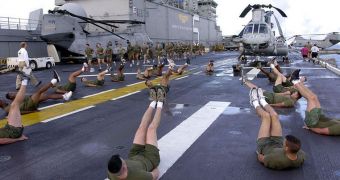Investigators have recently taken a vested interest in determining the precise combination of factors that make certain individuals more prone to ensure strenuous physical activity better than others.
In upcoming studies, research teams plan to investigate the cardiovascular system, the respiratory system and the muscular system individually, and then in relationship to each other.
Many scientists believe that this line of research will eventually lead them to an answer to this complex question. This work is important because our ability to exercise is one of the most important factors determining how healthy we are.
For starters, not exercising can lead to the development of chronic illnesses, by triggering a cascade of events that makes us more vulnerable and susceptible to influences from the outside. The immune system also loses its vigor at the same time.
Scientists at the University of Leeds are working close together with colleagues from the University of Liverpool in teasing out these correlations. They are analyzing a group of seniors against a group of healthy young people, and have also involved professional (even elite) athletes into the study.
“We know that having a powerful heart, efficient lungs and fatigue-resistant muscles that are economical in turning chemical energy into mechanical power are each important to be able to sustain physical activity,” says Leeds expert Harry Rossiter, the leader of the research.
“But the exceptional performance of elite athletes is not predicted simply from knowing the capacity of heart, lungs or muscles,” he goes on to say, adding that the research team needs to find the correct balance between these two aspects.
“The body is like an engine; not only does each component have to do their own job well, but their responses also need to be integrated effectively,” the expert reveals. Learning more about how this integration occurs is one of the main objectives of the new study.
This investigation is being conducted with funds provided by the UK Biotechnology and Biological Sciences Research Council (BBSRC). Experts at the two universities are also working with the British Cycling Science team on the investigation.
The project is scheduled to conclude in 2013. But that time, the experts need to be able to explain what allows some to have better physical endurance in more details than they are capable of today.

 14 DAY TRIAL //
14 DAY TRIAL //